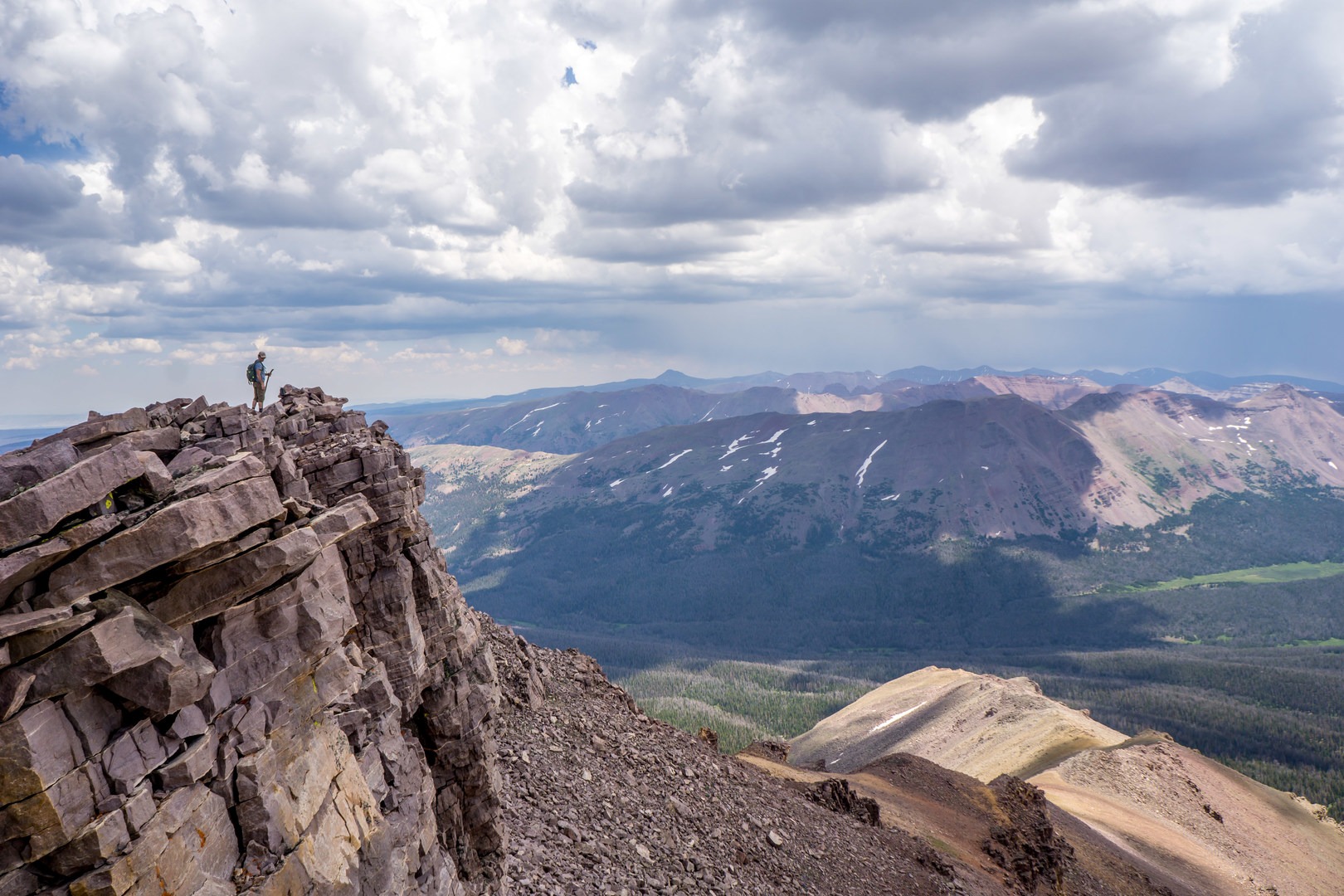You are here
All of Utah’s 13ers (there is some debate as to how many there really are) lie deep in the wild Uinta Mountains. What separates Utah 13ers from Colorado 14ers is remoteness. The Utah 13er that is closest to a road is a whopping 18-mile round trip hike, with some of the farthest 13ers being close to 30 miles round trip. Climbing each Utah 13er is a big challenge and a significant accomplishment, and the effort rewards hikers with serious solitude in one of the most unique and rugged mountain ranges in the west. Most people attempt Utah’s 13ers in two- to three-day trips, backpacking in on day one, summiting on day two and backpacking out on day three. This would be the most enjoyable way to climb these summits, as they are all located in pristine settings with amazing backcountry camping opportunities.
Tokewanna Peak is the closest Utah 13er to a road, coming in at around 18 miles round trip. Calling the dirt path up the West Fork Blacks Fork drainage a road is a bit generous; it is really a dirt path strewn with potholes and rocks. It is doable in most cars with extreme caution.
Upon arriving in the West Fork Blacks Fork drainage, it becomes apparent that this is a special place. The West Fork Blacks Fork is one of the most beautiful mountain drainages in the Rocky Mountains, and it features huge meadows, meandering streams, abundant wildlife and rugged mountain views. For the adventurous backcountry enthusiast, spending time in this area is a must.
The first handful of miles will be on a dirt road. It is not recommended to drive your car across the West Fork Blacks Fork, as this could be severely damaging to your vehicle. This area is at least 50 miles from cell phone service in all directions. Park at the river, ford the river, and begin hiking the dirt road. A few miles up the road there will be a fence with a few signs pointing in all directions. The route to Tokewanna takes a left toward East Fork Blacks Fork. The trail immediately begins to consistently climb. Climb this trail for over 1,000 feet until it mellows out. This is the Northwest Ridge, and this is where you leave the trail to walk the ridge to the peak. Yes, leave the trail. Hiking Utah’s highest peaks is done exclusively off trail, so have a map and be knowledgeable of where you are going.
The Northwest Ridge route is very straightforward. This ridge is more like a plateau or a huge alpine meadow. It slowly climbs toward the summit for miles and miles. There is a small 300-foot down-climb section that comes back to haunt you on the return, but apart from this, it is straightforward and nontechnical. Take this ridge all the way to the summit and enjoy one of the best alpine views in the Rocky Mountains. From the summit, you will have great views of four other Utah 13ers, which are said to be the most remote and most difficult to climb: Wasatch Peak, NW Wasatch Peak, Mount Lovenia and East Lovenia.
Backpacking Tokewanna Peak would be the best way to enjoy the scenery, and Bobs Lake is situated perfectly for a multiday climb. Please be aware that this is extremely remote country and has no cell phone service or amenities within 50 miles. You should expect to see no other hikers on the trail. In mid-summer months, afternoon summer storms are the norm. The Northwest Ridge features over 8 miles round trip of above treeline hiking. Start early and be prepared to turn around if necessary.
Logistics + Planning
Current Weather: Powered by Dark Sky



























Comments
Sign In and share them.